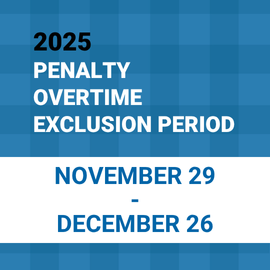January 1, 2017
Develop a Home Fire Escape Plan
(This article first appeared in the January-February 2017 issue of The American Postal Worker magazine.)
Fire can spread rapidly through your home, leaving you little time to escape safely. Your family’s ability to get out depends on their knowledge of home fire safety and developing an escape plan that everyone is familiar with and has practiced.
Tips to Making Your Home Fire-Safe
You can make your home fire-safe by following these tips:
- Install a battery operated smoke alarm on each floor.
- Check smoke alarms monthly, remove dust and replace batteries annually.
- Purchase a fire extinguisher for each floor and contact the fire department for training on its usage.
- Install a fire sprinkler system.
- Avoid leaving candles unattended. During a power outage, use flashlights and not candles.
Provide smokers with large, deep, ashtrays and soak butts with water before discarding them. Keep portable and space heaters at least three feet away from anything that can burn. Make sure children and pets stay away from heaters. Never leave them on when you leave home, and never leave cooking items unattended.
Developing a Fire Escape Plan
Hold a meeting with all family members, including small children, to develop a fire escape plan. Practice your escape plan at least twice a year with everyone in attendance. The family should:
- Assure that doors and windows can be opened easily and escape routes are kept clear.
- Outline two escape routes from every room.
- Purchase escape ladders and store them near windows.
- Choose an outside place to meet after escaping.
Ensure your house number is clearly visible for fire fighters. If necessary, assign two designees to assist infants, older adults or persons with mobility limitations. When a smoke alarm sounds, get out immediately. Stay a safe distance away from the home until it’s safe to return.
Call the fire department from a neighbor’s home and advise them if someone is missing. If you must exit through smoke, crawl low under it to your exit. When escaping through a closed door, feel the door before opening it. If it is warm, use another way out. If you live in an apartment building, take the stairs, not the elevator.
Testing Your Escape Plan
You should practice your home fire escape plan twice a year. Assign someone to awaken sound sleepers. When testing your escape plan, you should:
- Prior to holding a nighttime fire drill, advise children at bedtime to avoid frightening them.
- If your home has two floors, practice setting up a ladder from the second floor window to make sure everyone can escape quickly.
- Children should only practice with a grown-up.
During the fire drills, everyone should practice crawling low on their hands and knees, keeping heads low to breathe the “good” air that’s closer to the floor. Never crawl on your stomach, as some poisons produced by smoke settle to the floor. Close doors on your way out to slow the spread of fire.
What to Do if You Cannot Exit
Smoke or fire may prevent you from exiting your home or apartment building, so practice “sealing yourself in for safety:”
- Close all doors between you and the fire.
- Signal for help, at the window, using a bright-colored cloth or flashlight.
- Use duct tape or towels to seal the door cracks and cover air vents to keep smoke from coming in.
- Open your windows at the top and bottom so fresh air can get inside.
- Call the fire department and tell them where you are.
It is my hope that this article has provided you with a basic knowledge of how to develop a home fire escape plan. To obtain additional information, visit the National Fire Protection Association’s (NFPA) webpage at www.nfpa.org/public-education.



